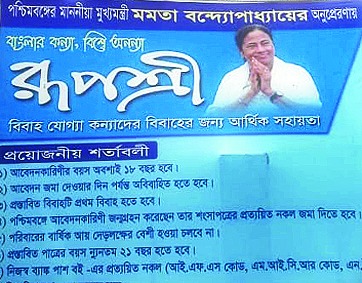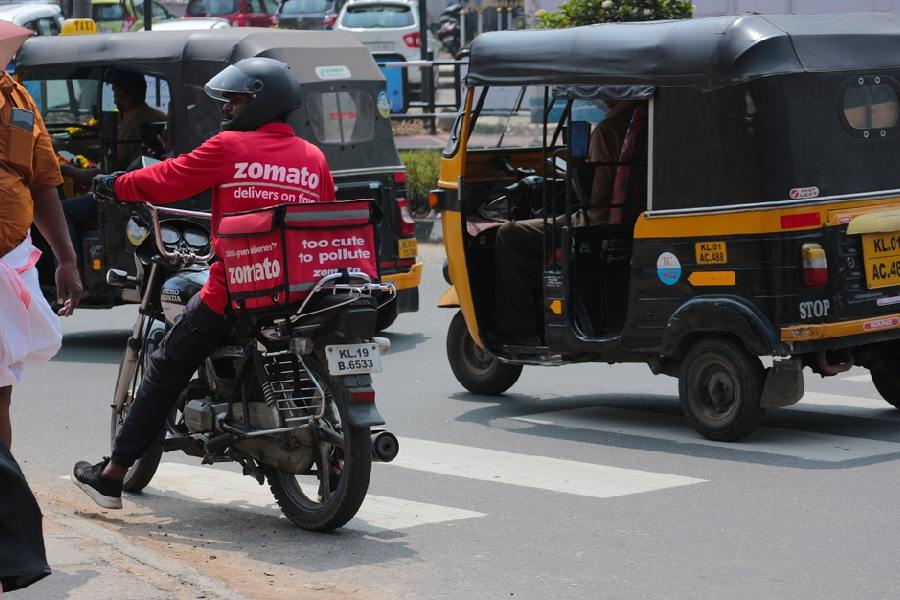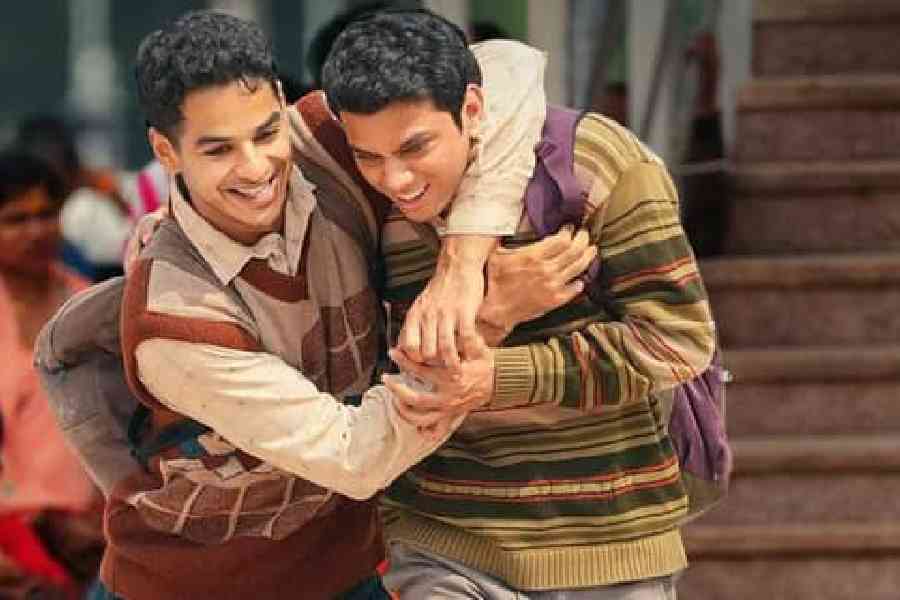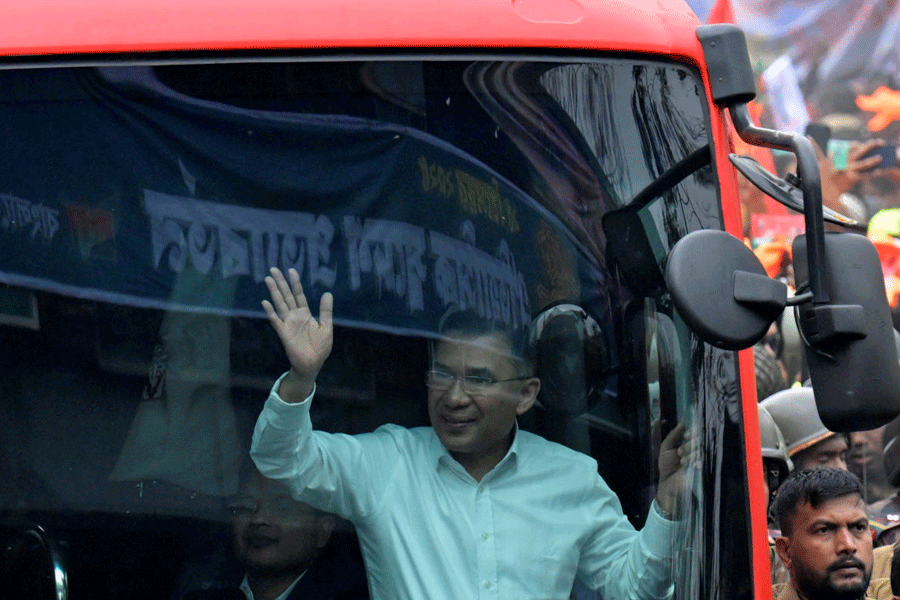
Beauty is in the beholder's eye. The beholder, in this case, is the Bengal government, holding a lot of money for girls of marriageable age.
In January, the state government had launched Rupashree, which is not a beauty parlour, but another programme "empowering" girls. The scheme rhymes with Kanyashree, which it follows, but Rupashree is scary in its provisions. Rolled out in April, it promises girls over 18 in the state a gift of Rs 25,000 for their marriage. Now the scheme stands explained in the official blue and white on billboards at government offices all over Bengal and it is not a pretty sight. Besides, a lot more remains to be explained.
Especially to women. Which, if I am allowed, I will ask the chief minister to do, as Rupashree, like Kanyashree, seems to be her pet project.
A scheme that is called Rupashree exalts beauty. Is the government asking all girls to be beautiful? Otherwise why name a government scheme for girls after beauty? Why cannot boys be subjected to the same aesthetic standards? Why are they free to be anything, or just plain ugly? Oh, the joy of it!
Even if we dismiss the name as just an idea, not an ideal, for women (though ideas are never just ideas, pernicious things that they are), what is the scheme actually saying? That girls need this money to get married? That girls are expected to bring in a little money with their marriage? That dowry is okay? (A sum of Rs 25,000 is the going rate for good boys in many Bengal villages now.)
Why does the girl alone need the money? What about the boy? Does not he need money to get married? Or is the government saying that the marriage is meant for women alone? Many have suspected so all these years, since its invention, but it took a state government scheme after all this time to spell it out so brilliantly.
But if marriage applies to women alone, what is the man doing there? The scheme evades that question. Maybe the scheme is meant to evade that question. For the 'boy' is not faring that well, either. In all probability he has migrated to a quarry in a distant state where his lungs are choking up every day with sand and dust. A scheme like Rupashree will come as a one-time help for such a man, and help to gloss over the real concerns of his life. Or should the boys expect a scheme called 'Footballshree'?
Is Rupashree an incentive for girls to marry? It is an incentive for girls to marry. In that, Rupashree contradicts the very premise on which Kanyashree is built: education till the higher secondary level for girls, which can be expected to lead to a real sense of empowerment. But from the way the schemes resonate with each other - Kanyashree awards Rs 25,000 to girls who have studied till Class XII - it seems that Rupashree really takes over from where Kanyashree ends. After school, marriage: for girls, the two important events of their early life are defined and equally incentivized. The thought behind such a scheme betrays a cynicism about the possibilities about women's lives that is horrifying.
The authors of the scheme, who could be well-meaning, may argue that this is the reality. That most girls will get married after 18. That they do, and the scheme will help them in a practical way.
This is the same argument that defended the saas-bahu serials, saying women are women's greatest enemies. When women are at each other's throats, whose interests are they serving? When girls are being offered Rs 25,000 to get married, whose interests are they serving?
In the latter case, also of electoral politics.











